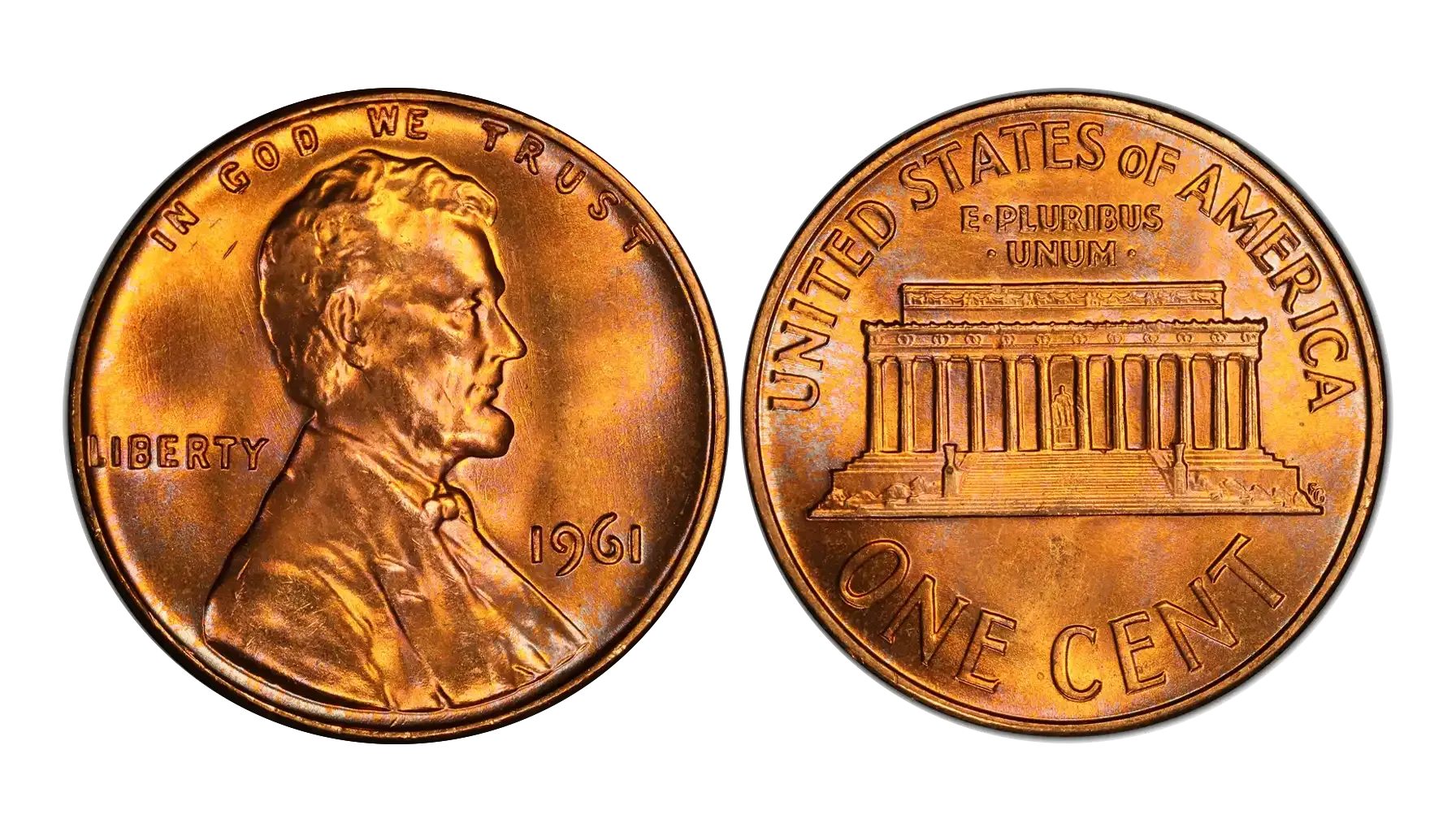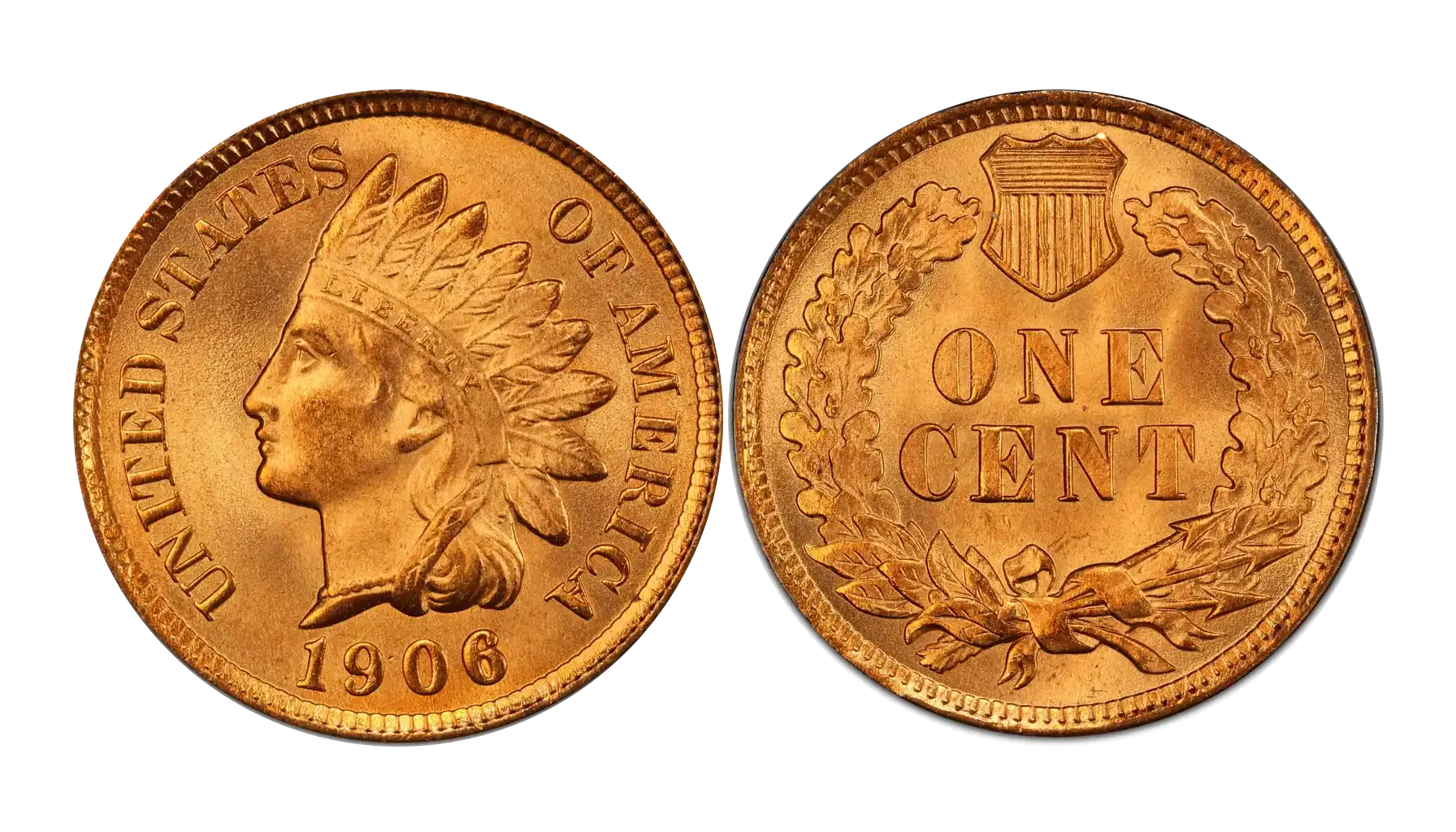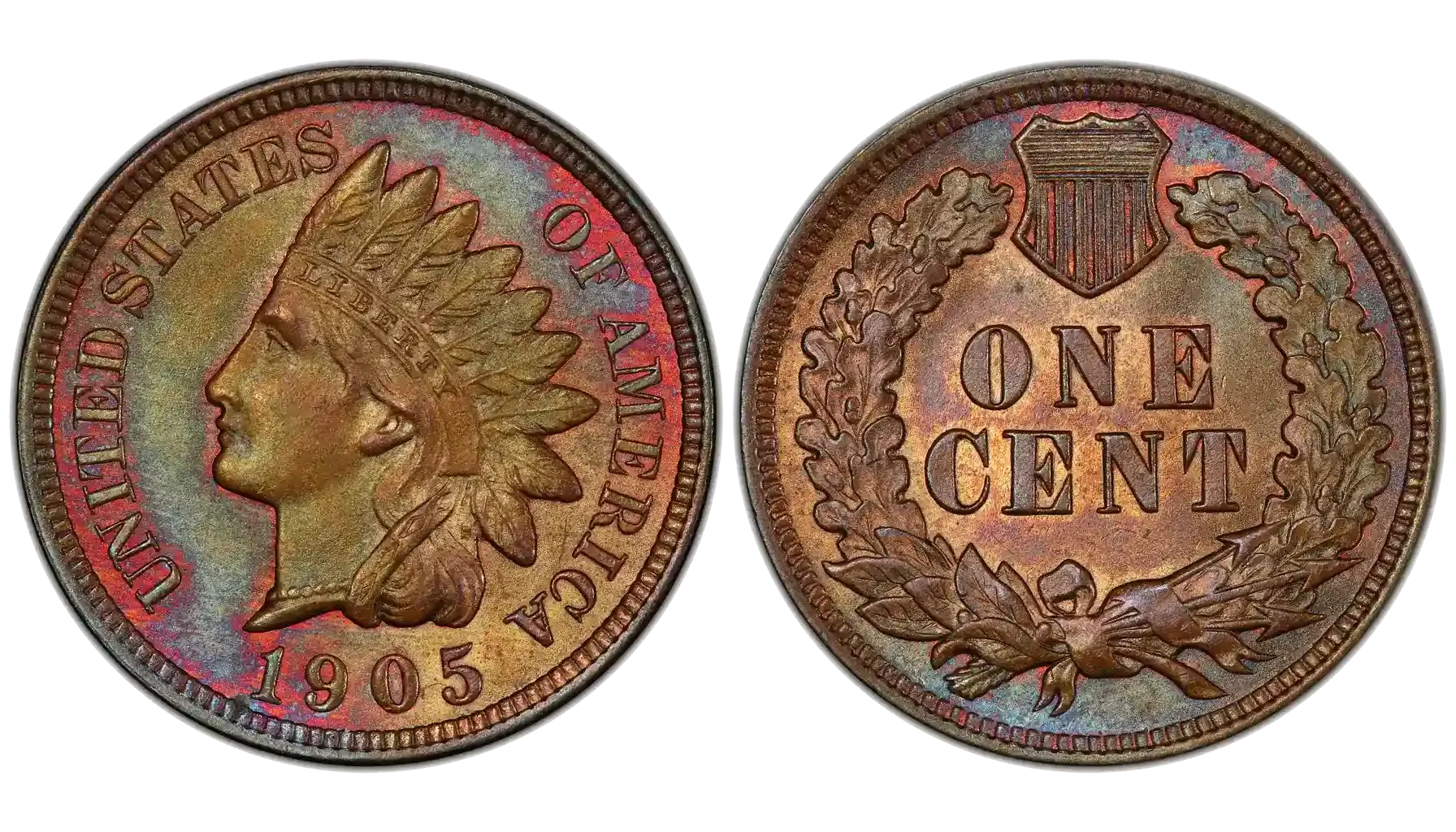Contents:
.Indian Head cents are very popular among U.S. coin collectors. It shouldn’t come as a surprise. The coin saw a lot of historical events, has a distinct design, and has some rare varieties.
How much is a 1902 Indian head penny worth? Let’s learn all about this coin and why you’d want to get one in your collection.
Coin values are so confusing. The prices are constantly changing and have so many factors to them. Gladly, there’s a Coin Value Identifier for you.
Indian Penny Design
The Indian head penny 1902 went through a redesign. The original version from 1859 didn’t have the shield on the reverse. This version has the shield.
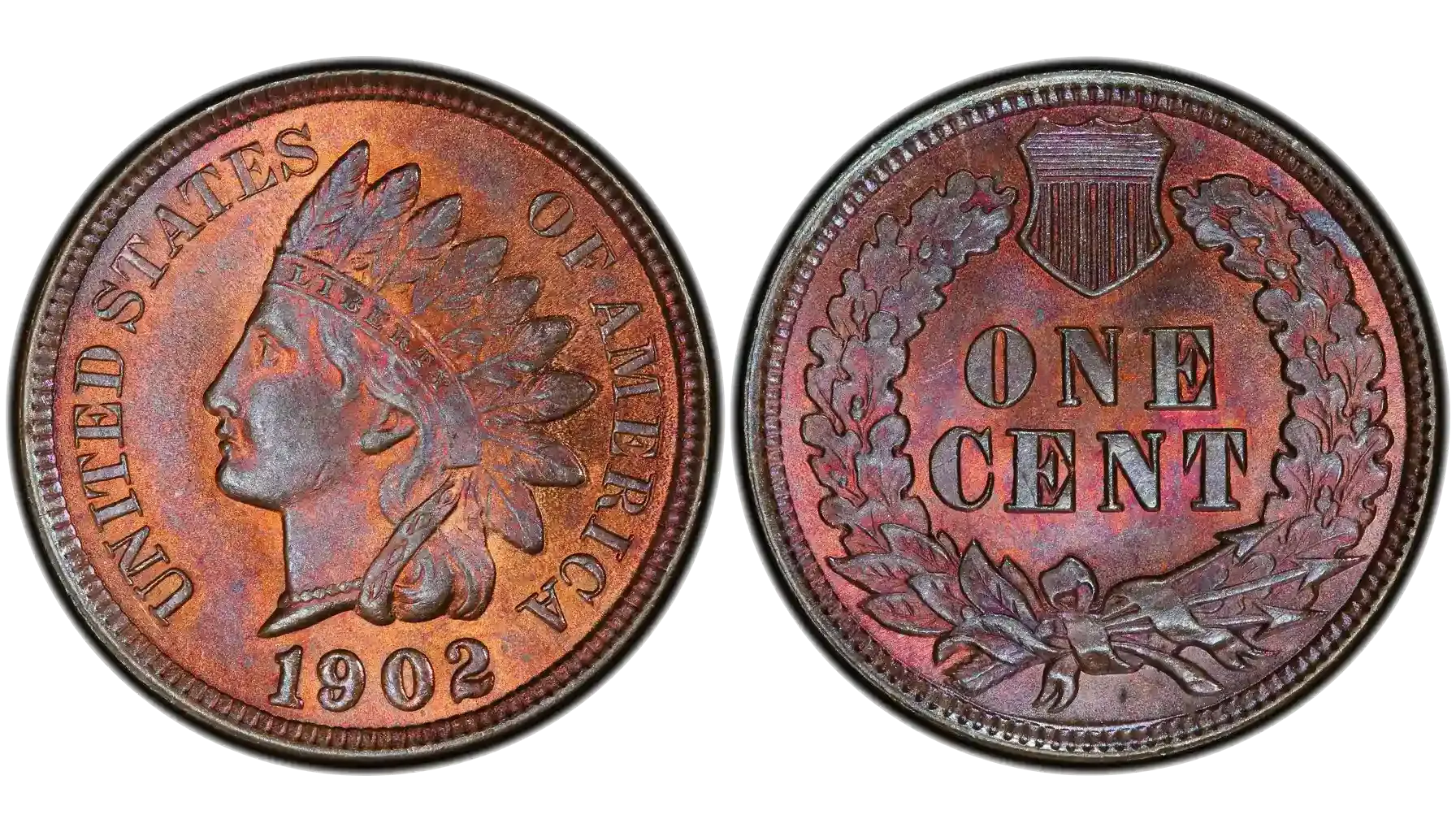
Obverse features Lady Liberty wearing a Native American headdress with the word "LIBERTY" on the band. Around her are the words "UNITED STATES OF AMERICA" and the date (1902).
Reverse displays a wreath of oak leaves with a shield at the top, surrounding the denomination "ONE CENT".
Fun fact: The 1902 Indian head cent was designed for convenience. Its predecessor, the 1856 Flying Eagle cent, had a pronounced relief that was hard to make. The Indian penny series was chosen for mintage due to its simpler, cheaper design.
Indian Penny Overview
The main characteristics of the 1902 penny | |
Country | United States |
Years of Minting | 1864-1909 |
Type: | Standard circulation |
Shape: | Round |
Composition and metal content | Bronze (95% Copper, 5% Zinc) |
Diameter | 19 mm |
Weight | 3.11 grams |
The Mints | United States Mint of Philadelphia, United States Mint of San Francisco (1908, 1909) |
Why Is the Indian Penny Popular?
This coin is quite a catch. Many collectors want to get a piece. But why?
The Indian Penny series represents a pivotal era in U.S. history: the Civil War, Reconstruction, westward expansion, and the Gilded Age.
During these events, many coins were melted, sacrificed. It makes the survivors valuable not only materially, but spiritually too. The memories of these events, good and bad, are forever engraved in the metal.
Indian Penny Mint Marks
Surprisingly, according to the mint mark, the 1902 Indian penny has only a No-Mint Mark variety. Such coins were minted in Philadelphia.
Historically, the Indian penny had no other mint marks, and the tradition was kept up to the 1907 Indian Penny. The latter 1908 and 1909 had S-mint marks from San-Francisco.
1902 Indian Head Penny No Mint Mark
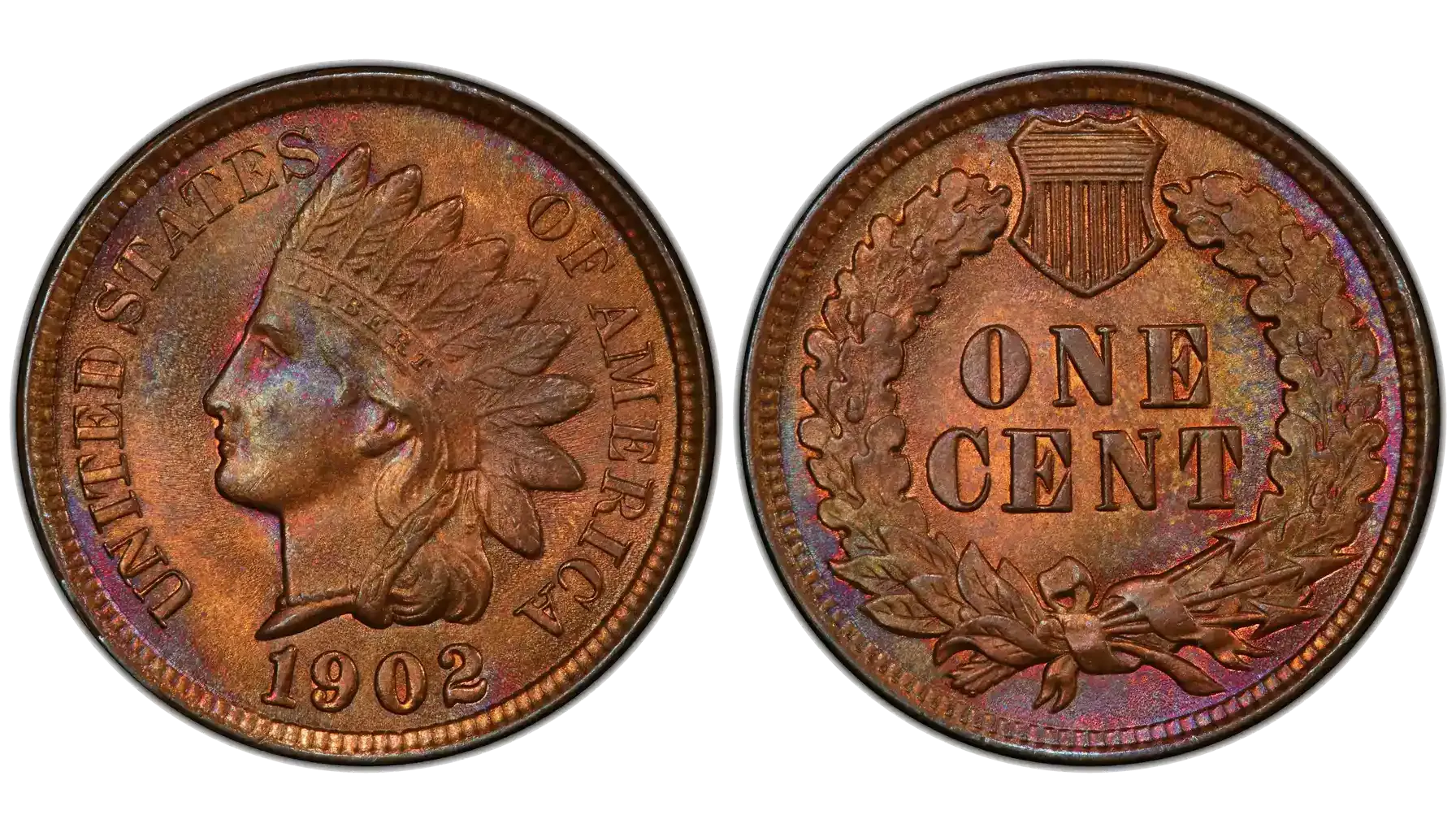
1902 saw the release of 87,374,704 pennies from Philadelphia. The third biggest mintage for the Indian series.
Identifying this piece is very easy. Just look at the obverse. You’ll find the date at the bottom. As there are no other varieties, you don’t need to check the mint mark.
What Increases the Value of a Coin
How much is a 1902 penny worth depends on a few factors. As long as at least one of these factors clicks with your collectible, it might sell for a good price.
Condition/Grade:
Coins are graded on a scale from Poor (P-1) to Mint State (MS-70).
Higher-grade coins (sharper details, less wear, original luster) are worth much more.
Red (RD), Red-Brown (RB), and Brown (BN) designations apply to copper coins. Red penny value for any mintage is high, be it Lincoln or Indian.
Rarity:
Coins with low mintage numbers or those from scarce years (or with mint errors) are more valuable.
Some dates/mint combinations are rare and sought after, even in lower grades.
Demand:
Popular series (like Indian Head or Lincoln cents) are more valuable due to collector interest.
Dates on coins mean a lot. Coins that fill a key date in a popular series will have higher demand and value.
Errors & Varieties:
Mint errors (like double dies, off-center strikes, or wrong planchet errors) can make a piece much more valuable.
Varieties (like transitional changes in design or die) also attract collectors. For example, 1921 Morgan & Peace dollars were a transitional edition.
Historical Significance:
Coins from important historical periods (wars, economic depressions, etc.) often carry more collector interest.
Eye Appeal:
Coins with natural toning, good strike, and even wear are worth more.
Bright, well-struck coins with attractive luster tend to command premium prices.
Originality Preserved:
Coins that have not been cleaned, polished, or altered are more desirable.
Cleaning a coin can drastically reduce its value, especially to serious collectors.
Provenance or Certification
Coins that are certified by trusted grading services (like PCGS or NGC) are usually worth more.
Penny Grading
The value of the 1902 Indian head penny depends mostly on the grading. Pennies are graded according to the Sheldon Scale. The scores range from 1 to 70, where:
1 = Barely identifiable (Poor)
70 = Perfect, no flaws (Mint State)
Grade | Label | Description |
P-1 to G-4 | Poor to Good | Very worn. Most details are gone. The date is readable but only barely. |
VG-8 to F-12 | Very Good to Fine | Moderate wear. Liberty and wreath are partially visible. |
VF-20 to VF-35 | Very Fine | Light wear. LIBERTY is full, headband clear, feather detail visible. |
EF/XF-40 to EF-45 | Extremely Fine | Minor wear on high points (like the cheek or tips of feathers). Sharp details. |
AU-50 to AU-58 | About Uncirculated | Very slight wear on the highest points. Full details and strong luster. |
MS-60 to MS-70 | Mint State | No wear. Uncirculated. MS-70 is flawless under magnification. |
What can you do if your collectible has a mediocre grade? Look for other options, then. Literally. Coin errors boost the price significantly, too, even if the condition is bad.
1902 Indian Head Penny Error List
The older the piece, the more errors it accumulates, and with its big mintage and age, the Indian penny must have accumulated a lot of those, so let’s observe them.
Off-Center Strike
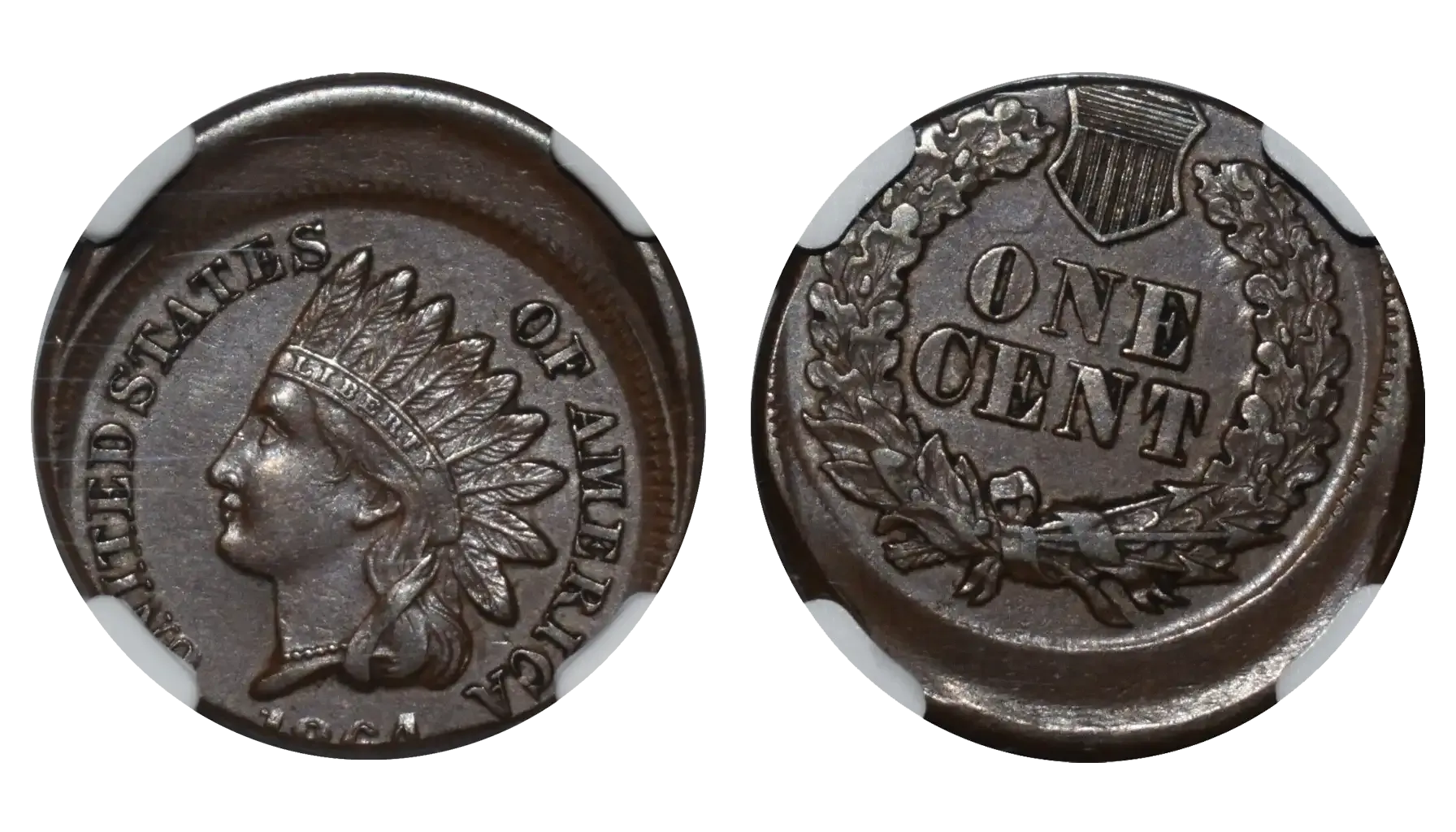
With this error, the coin is not centered. A part of the design looks missing, and there's an empty crescent on one side. A well-centered coin should have even borders all around. This one doesn’t.
Cause: Planchet wasn't aligned correctly when the piece was struck.
Value: $10–$30+, depending on the shift.
Double Die (Obverse or Reverse)
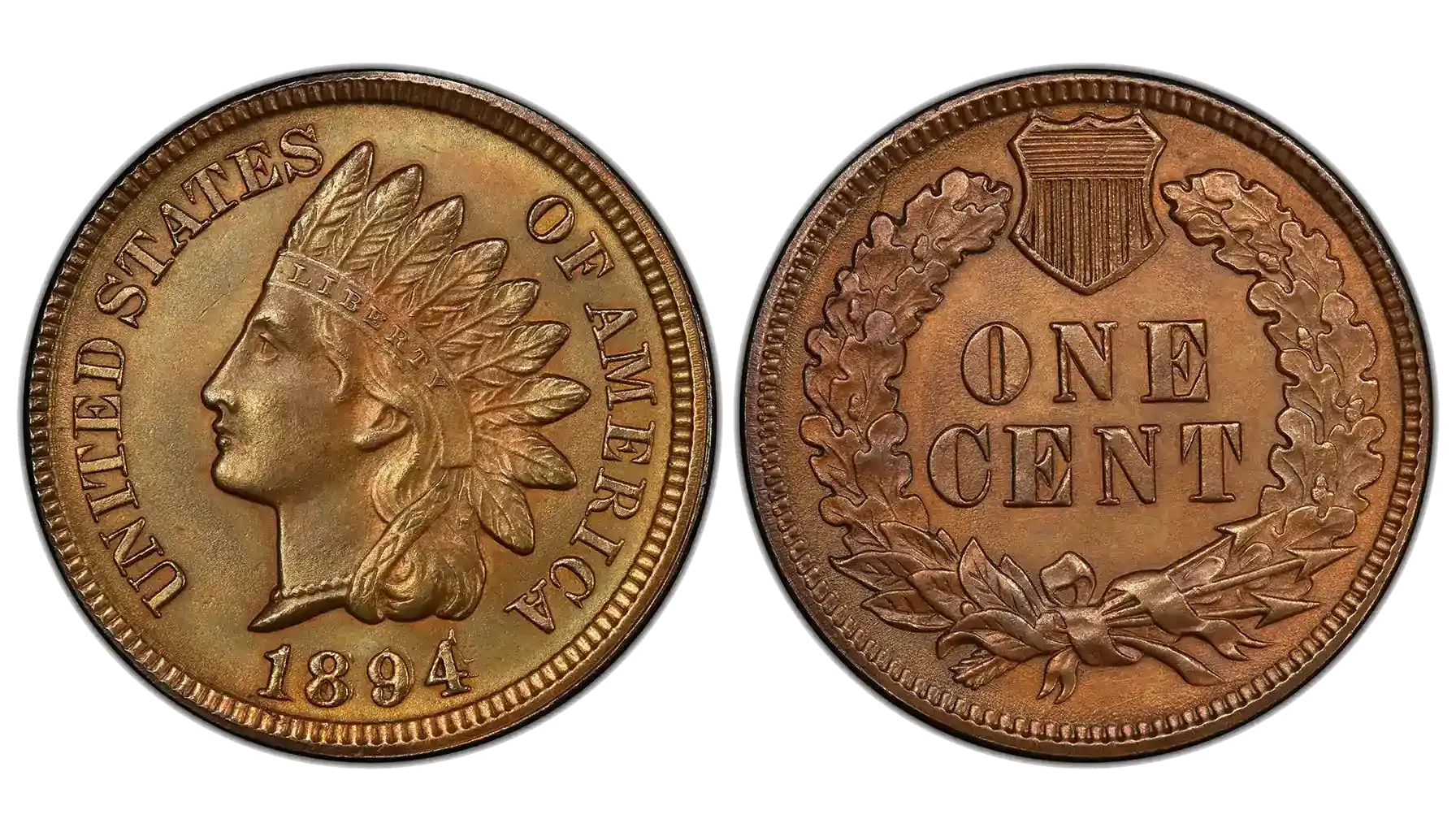
With this error, parts of the design (like the date, lettering, or leaves) appear twice.
Error cause: The die was struck more than once, slightly off-center during creation.
Value: Can range from $50 to over $1,000, depending on severity and grade.
Such an error coin 1902 Indian head penny is very desirable among collectors.
Clipped Planchet
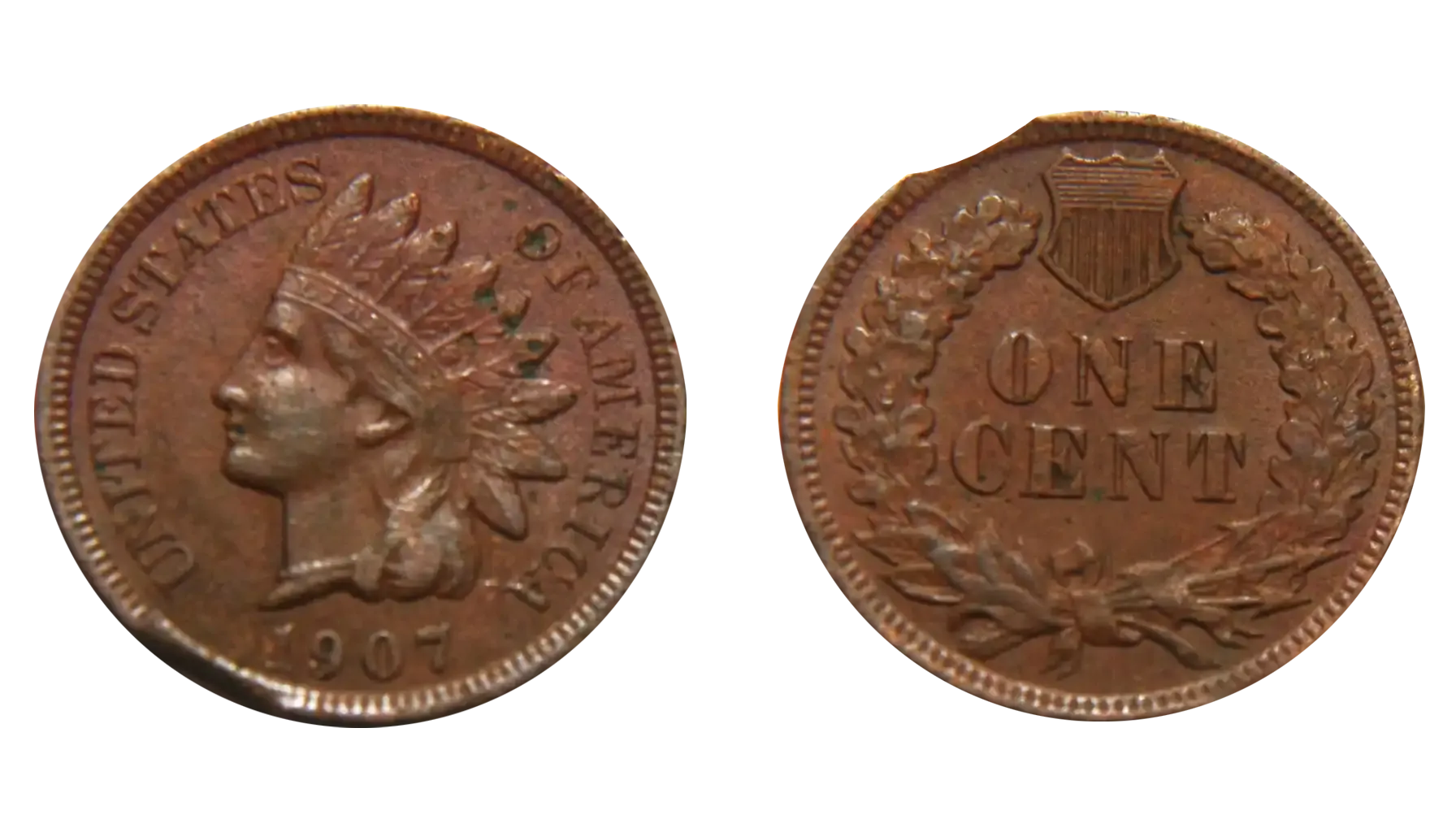
When a portion of the coin is missing, and it looks like a “bite” was taken out, you might be dealing with a clipped planchet.
Error Cause: Coin blank (planchet) was mis-punched from the metal strip.
Value: ~$25–$150+, depending on the size of the missing chunk.
Broadstrike
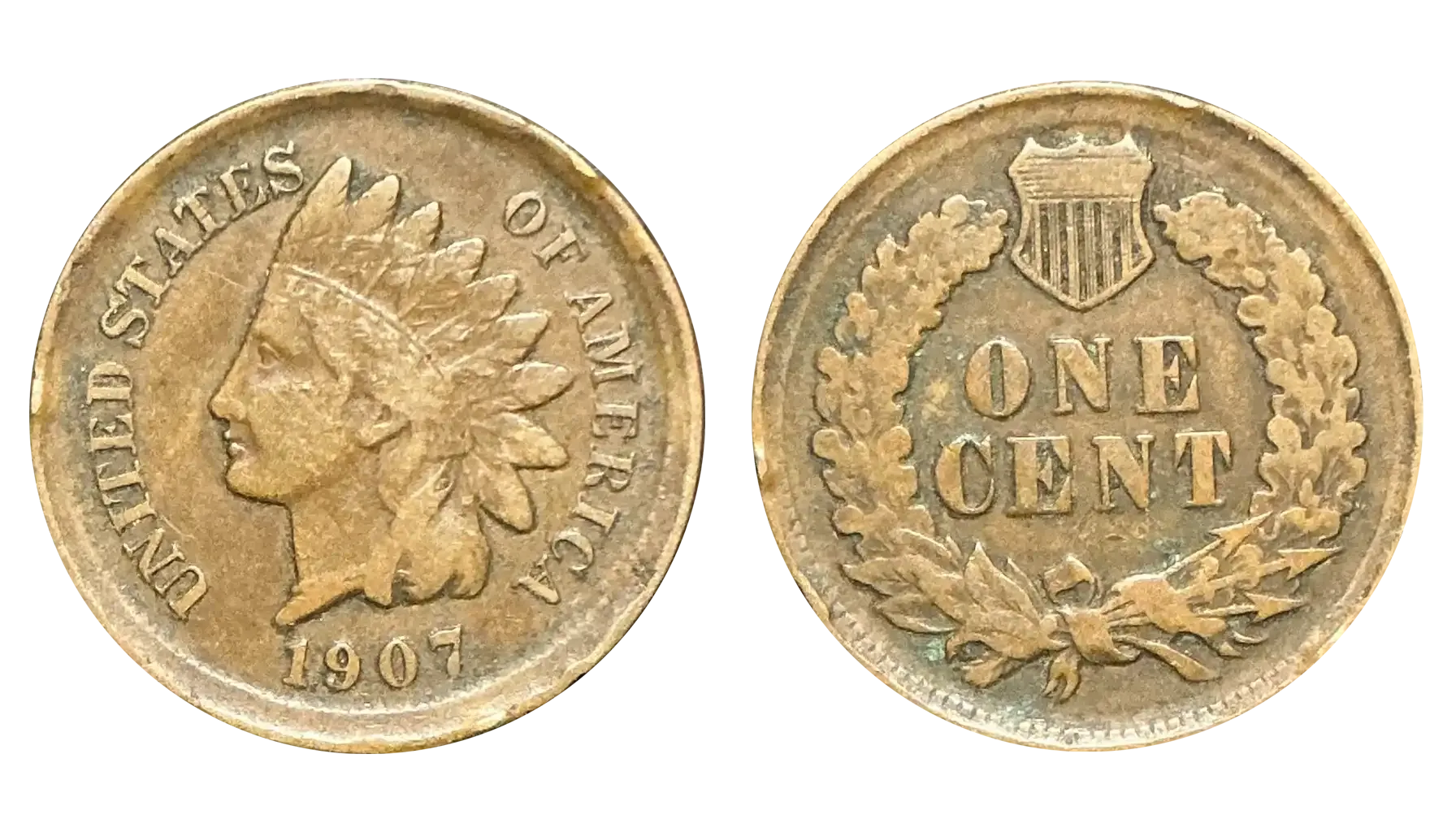
The coin appears wider and flatter than normal, with no defined rim. The edge looks smooth and blurry instead of sharply rimmed.
Error Cause: The piece was struck outside the collar that normally holds the coin shape.
Value: ~$50–$200+.
Repunched Date (RPD)
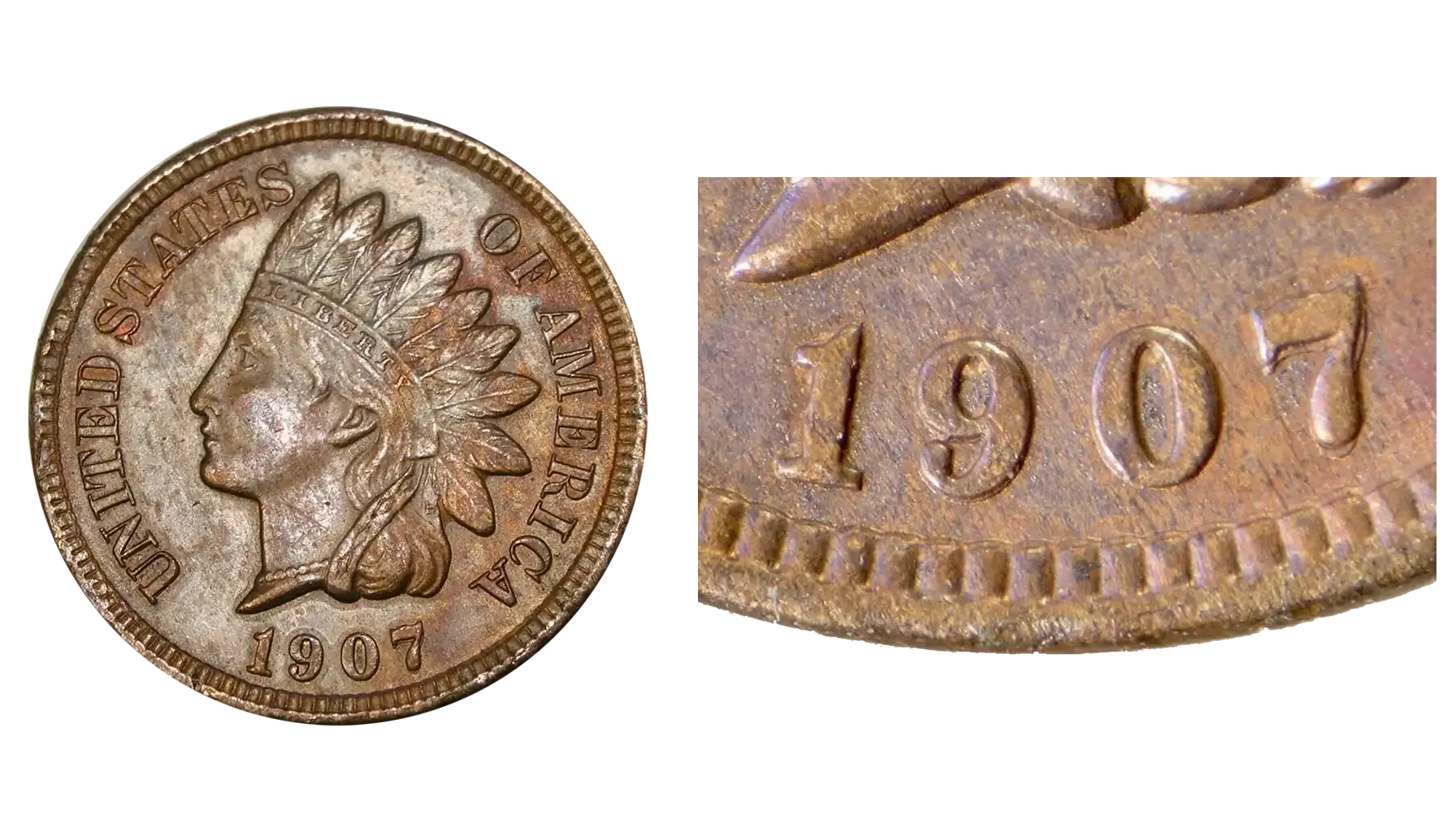
In this case, the date was punched more than once in slightly different positions. Use a magnification loupe to look for shadows or ghost images behind the digits. The error is similar to double dies, but this one only concerns the dates and usually looks milder.
Error Cause: Manual punching of date (which was common for that era), resulting in misalignment.
Value: $80+ depending on clarity and rarity.
Strikethrough
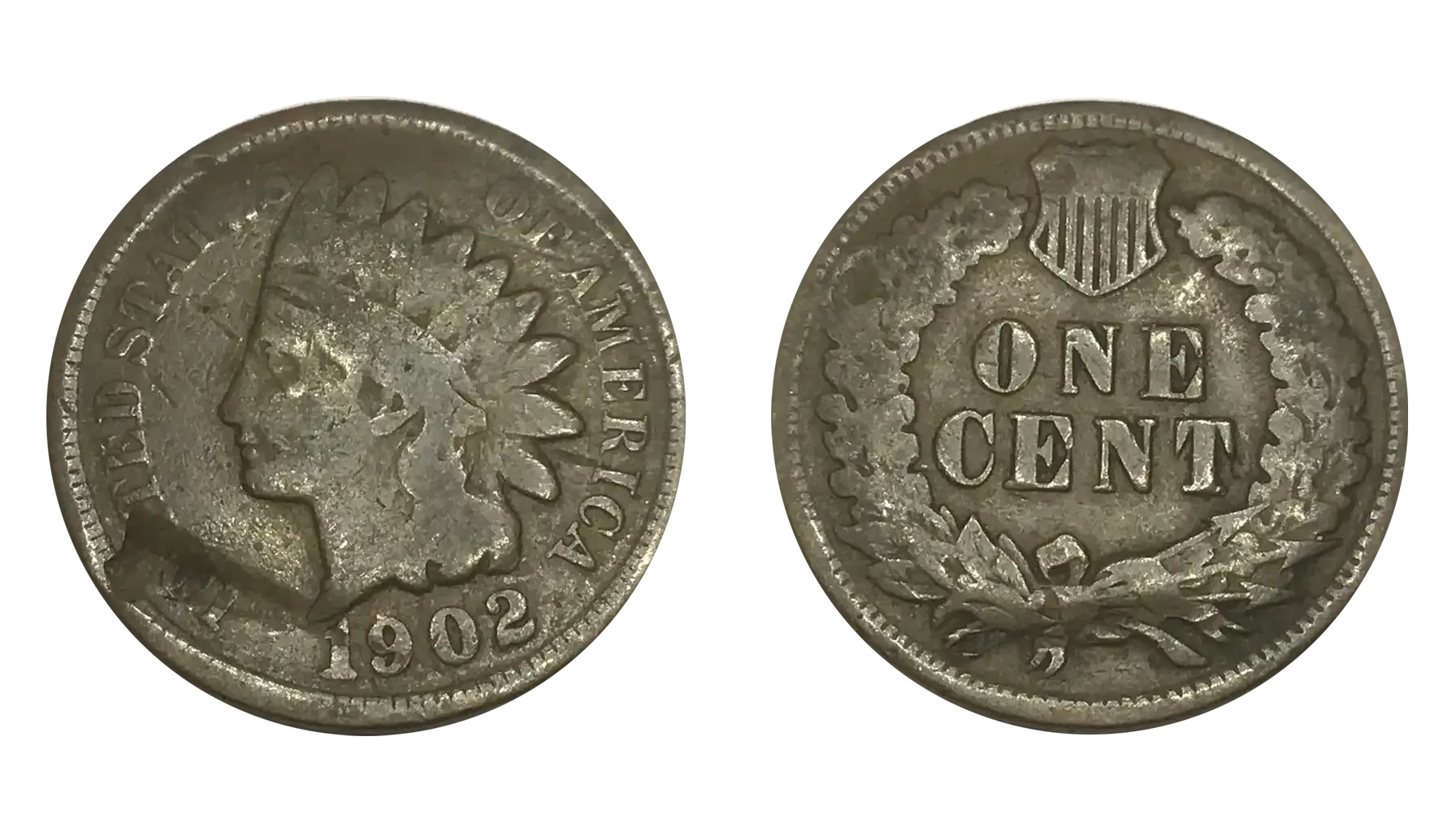
With such an error, a part of the design looks missing, faded, or oddly textured.
Error Cause: Debris interfered during the strike. Foreign material (like grease or cloth) gets between the die and planchet during striking.
Value: ~$25–$150 depending on severity and eye appeal.
1902 Penny Value
Now we know everything that makes up the 1902 Indian head penny value today.
Condition | Estimated Value |
Good (G-4) | $2 – $3 |
Fine (F-12) | $3 – $5 |
Very Fine (VF-20) | $5 – $8 |
Extremely Fine (EF-40) | $10 – $13 |
About Uncirculated (AU-50) | $20 – $35 |
Mint State (MS-60) | $50 – $75 |
Mint State (MS-63) | $80 – $100 |
Mint State (MS-65) | $165 – $200 |
Mint State (MS-66) | $450 – $600 |
Mint State (MS-67) | $1,200 – $1,500+ |
For 1902 one cent coin value, the combination of errors and a good grade is the best. Errors in higher grades (EF to MS) are far more valuable than the same error in a heavily worn coin.
Getting such a coin graded by NGC or PGC can boost its market value further.
Coins ID Scanner
Coin ID Scanner is a promising coin identification app with a large database and helpful features.
You snap a photo, and the app analyzes your collectible in seconds. Whatever coinage you have, the app will likely recognize it. Coin ID Scanner has more than 150.000 entries, after all.
And as for helpful features, there are collecting guides, news, overviews, and even an AI assistant if you have questions concerning coins.
Coin ID Scanner is available on iOS and Android devices. Free to download!
FAQ
What Is the 1902 5 Cent Coin Value?
You must be talking about the 1902 Liberty Head (“V”) nickel. It’s the 5-cent denomination in 1902. Uncirculated (MS) examples typically range from $60 – $100, and circulated pieces go for $2 – $30.
What Is the 1902 Wheat Penny Value?
Technically, there’s no value, because wheat coins were no longer minted in 1902. Wheat pennies came only later, in 1909, and replaced your Indian penny.

